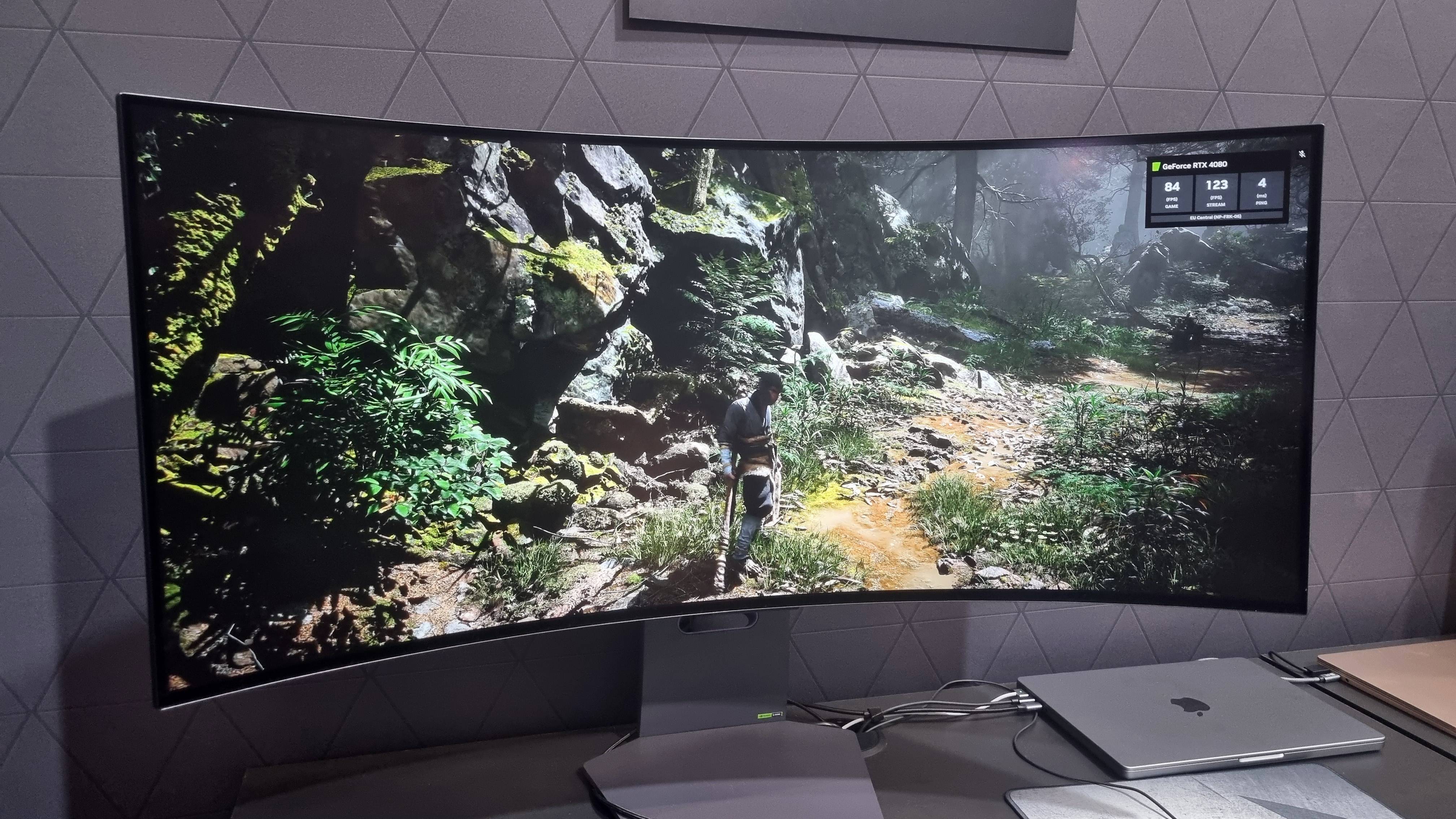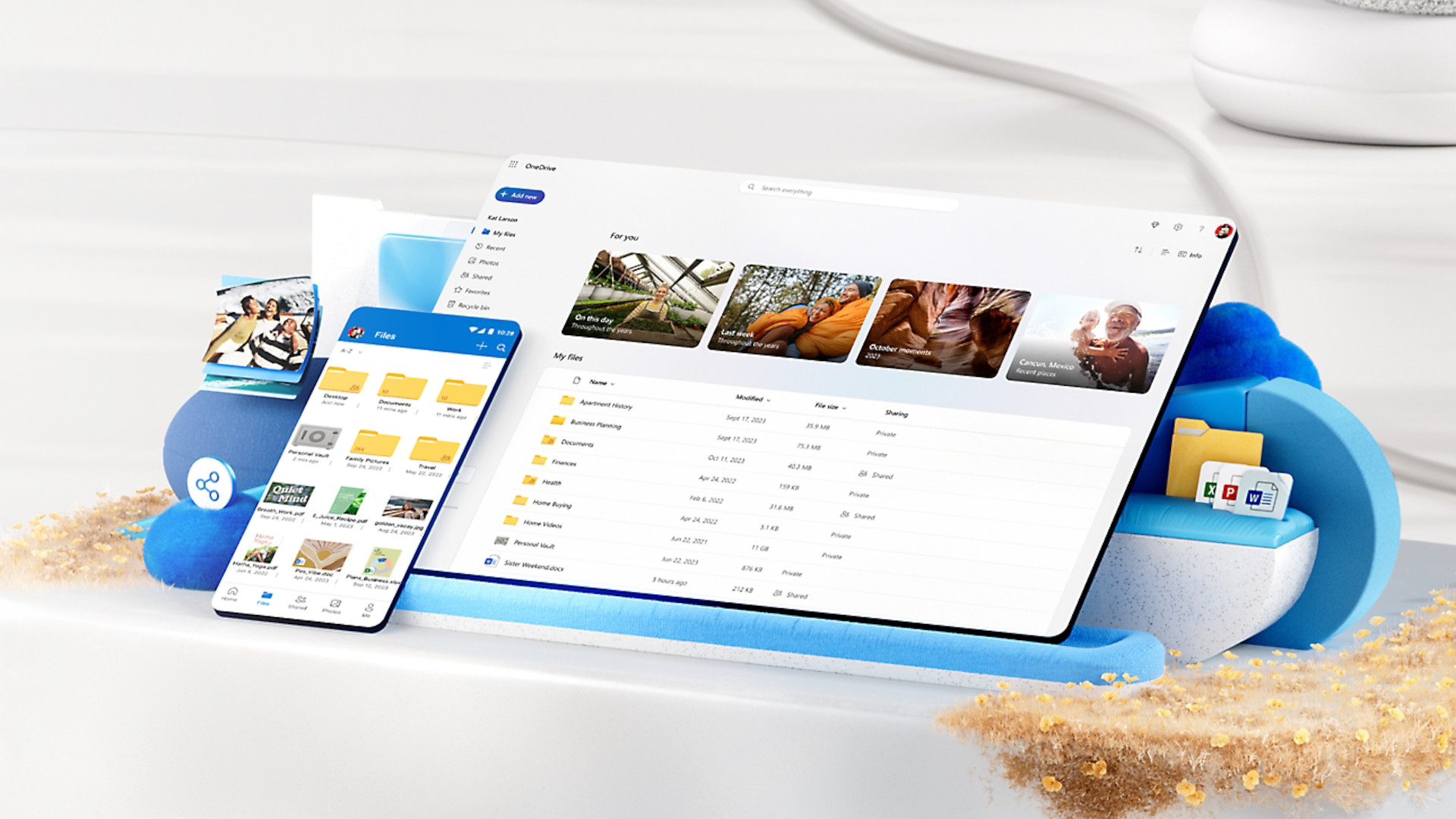
Even as a PC gaming traditionalist, I couldn't help but be impressed.
For someone that spends their life covering the cutting edge of tech, I can be surprisingly old-fashioned. I’ve lost the love for multiplayer gaming, I care not a jot for esports, and I like my games running on the powerful piece of hardware sitting on my desk, thanks very much. None of that cloud gaming malarkey for me.
However, watching Black Myth: Wukong streaming via a GeForce Now-equipped MacBook at Gamescom 2024, I had something of a realisation. A re-assessment of my principles, if you will. This is a game that caused our Tyler’s mighty RTX 4090 to struggle, and while you can absolutely tweak the settings to get a smooth experience (our Nick has put together an excellent guide to help you do just that), it can require a fair bit of adjustment to get the best out of it.
Playing it with the settings turned up, at a seamless 80 fps + with zero-perceptible latency—on a MacBook, of all things—suddenly made me realise how much sense cloud streaming services make for a game like this. Put simply, the experience looked brilliant. Perfect, even. 4 ms or less of latency. Excellent visuals, delivered via a connected ultrawide display. A very demanding game, made to look trivially easy to run on a standard-issue laptop.
And for all my long-held instincts to treat cloud-based gaming with caution, I was left wondering whether I’d fallen behind.
I thought about my rig at home. Sure, I could fire the game up on my RX 7800 XT, have a play around with the settings, and continually pull myself out of the magic on screen by keeping a watchful eye on the frame rate counter.
(Image credit: Future)
Or, I could log in to Geforce Now on a supported device, and simply press play. And, y’know, actually get on with the business of enjoying the game, rather than continually wondering whether my hardware was up to the task, or whether I was one setting tweak away from a seamless experience.
My demonstration was on trade show internet, which is notoriously unreliable. Chatting with the folk at the Nvidia booth, I was shown that the game was using between 50-70 Mbps on average, and told that other than a brief latency increase at one point, it had been perfectly smooth to play for the entirety of the day.
That being said, it was running on a GeForce Now Ultimate account, which grants you access to RTX 4080-equivalent performance delivered via one of Nvidia’s enterprise-GPU-equipped machines. That’s the most expensive tier, at $20 a month.
Still, while I was only able to spend a few minutes with Black Myth: Wukong before moving on to the rest of the goodies Nvidia had to display, the experience still left a lasting impression. Other than the overlay on screen showing me real time data, if you’d told me this was running on a high-powered PC under the desk—I would have believed you.
And that’s quite the thing. If I was stuck with older hardware that’d likely struggle with a game this demanding, GeForce Now could be the difference between playing the latest hot new thing at liquid smooth frame rates, or resigning myself to a choppy mess. Or, of course, simply not playing the game at all.
(Image credit: GameScience)
I’ll be testing GeForce Now more thoroughly when I get back to the UK, as my hotel internet is quite frankly not up to the task. It’s not magic after all, and you do need a decent amount of connection speed to get the proper effect. But it’s been a while since I’ve seen Nvidia’s cloud streaming service in action, and I can’t shake the feeling that it really does look like the future.
I, like most of you reading, I assume, love my precious PC hardware. I like powerful components running the game right next to me, as that’s where some of the magic of the experience lives, at least as far as I’m concerned. But what I was shown was so damn convenient, so seamless at this point, that it gave me pause.
Why not offload it elsewhere, if you have the connection to handle it? Why not pay for your hardware usage in bitesize chunks, rather than saving your pennies and cents for one-off purchases—spending substantial amounts of cash on expensive CPUs and GPUs that will eventually need upgrading?
More than the hardware benefits, when developers talk about the future of thin clients, streaming, and gaming in the cloud, they get wide-eyed. A future of games not limited by asset size, or quantity. Games modelling the whole Earth, in some form or fashion, streamed seamlessly to our eyeballs.
And while these sort of methods are not necessarily the same thing as GeForce Now (in the example above, the rendering is still happening on your local machine), it’s still relying on an internet connection to deliver your games in real time. And that comes with caveats, of course. Cloud providers can, and will, change the prices at a whim. You’re also stuck with whatever hardware they provide, and if the service goes under (à la Google Stadia), well, you’re plain out of luck. Never mind if you’ve got an unreliable internet connection, or struggle to get good speeds in your area.
Cloud streaming might not be the solution that I, or you, necessarily want. Again, we love our personal hardware, after all, and there are significant downsides to relying on a connection to play your games. But if it’s the solution we get, it’s becoming very difficult to argue with the quality of the results.






